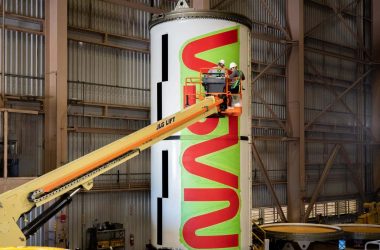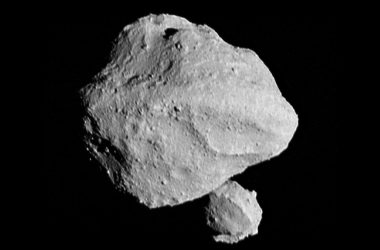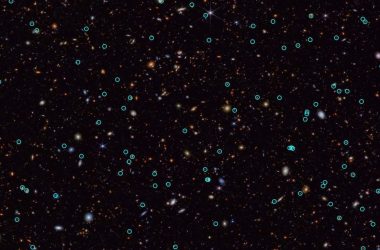New Discovery Reveals Oldest Fast Radio Burst
Artist’s impression of the path the fast radio burst FRB 20220610A took between the galaxy where it originated (top left) and Earth, in one of the Milky Way’s spiral arms
ESO/M. Kornmesser
Astronomers have made a remarkable discovery by identifying the oldest fast radio burst (FRB) ever observed. This burst of radio waves originated 8 billion years ago, making it the most ancient FRB known to date. Since the first discovery of FRBs in 2007, hundreds of these enigmatic bursts have been detected on Earth. However, this particular burst is not only the oldest but also the most energetic.
The energy emitted by this FRB is equivalent to what the sun produces in 30 years. To put it into perspective, it has enough power to microwave a bowl of popcorn twice the size of the sun. Ryan Shannon from the Swinburne University of Technology in Australia shares the magnitude of this burst.
Unraveling the Mystery of Fast Radio Bursts
FRBs are believed to originate from highly magnetized neutron stars located in distant galaxies. These bursts, which typically last for only a fraction of a second, often remain unseen after their initial detection. Therefore, this discovery holds significant importance in understanding the nature these events.
Upon closer examination of the celestial location where the emission originated, using the Very Large Telescope in Chile, the researchers identified a cluster of galaxies that may contain the source of the burst. Stuart Ryder from Macquarie University in Australia highlights the significance of this finding, stating that the burst has been traveling through space for nearly 8 billion years.
Comparatively, the previous oldest known FRB had been traveling for 5 billion years. This latest discovery suggests that FRBs have been occurring for at least half the age of the universe, which is estimated to be around 13.7 billion years old.
Insights into the Early Universe
Scientists study FRBs to gain insights into the early universe. As these bursts reach Earth, the waves interact with the particles and matter between galaxies, causing some waves to slow down and their wavelengths to stretch. By observing these phenomena, astronomers can better understand the uniformity of matter in the intergalactic space.








